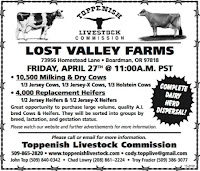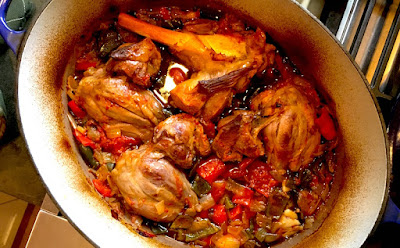When I would go to the farmers' market or the grocery store, I browsed the vegetables on offer to find the one that I deemed worthy to take home to my table. I never wondered how it got there—I assumed the farmer planted seeds from a previous crop (or a seed packet) and the vegetable would grow reliably as it had in previous seasons. It never occurred to me that what I was looking at was the result of deliberate choices on the part of the farmer (or seed breeder) over many years. The following is the final part of an article that contributor Anthony Boutard wrote for Acres USA magazine outlining that patient process. (Read the other posts in the series.)
We fielded many inquiries about blue corn so we decided to try it. Despite the expressed interest, it sold poorly. Blue cornmeal looks like concrete mix, which is off-putting to most people, ending our blue corn moment. Among the blue ears, however, we found a single purple ear. It intrigued us so we decided to plant some of its kernels. Fourteen years later, black flour corn is our art project that arose from that chance purple ear.
Package label designed and produced by Anthony Boutard.
The design brief materialized as we noticed the wide range of purples that resulted from the initial planting. Using millo corvo (crow millet), the black corn of northern Spain, as our inspiration, we decided to draw out ears with such intensely purple kernels that they appeared black. At its simplest, the purple coloration seen from the outside of the kernel results from a red pericarp and blue pigments in the aleurone layer of the endosperm. Ears with a combination of red and purple kernels were removed from the breeding population because the red kernels lacked the blue pigments.
In addition to red pigments, a wide range of purples will show up in the pericarp. These colors are regulated by a complex of genes that also lead to different pigments in the stalk, silk, cobs and leaves. These pigments are water soluble, staining the hands during harvest, and can be used as dyes. Many different shades appear and, in the extreme, some plants produce so much pigment that photosynthesis is severely reduced. The plants are beautiful, though stunted, and fail to produce any kernels.
Early ripening is an essential element of the brief. Flour type corn ripens later than the flints—some of the initial purple ears didn’t ripen until mid-November. Our goal was to have the ears ripen by early October.
Evaluating the ears.
The challenge with the flour corns is that the meal is not richly flavored compared to the flint and popcorn types, thus not great as polenta or grits. The high level of anthocyanins associated with the purple coloration also confers a slight bitterness to the meal. There is not much point in a beautiful cornmeal if it doesn’t sell. Fortunately, sweetened recipes bring out the best in the purple meal. Think of bittersweet chocolate. Cornmeal cookies and cornmeal poundcake are delicious and attractive on the plate. The water-soluble anthocyanins are also pH indicators. In Oaxaca, tamales made from purple corn are a traditional part of the “Day of the Dead” celebration, and in Ecuador the corn is used to prepare a drink for the same celebration.
As a flour corn, it is suitable for masa. However, the costs of growing flour corn in our climate, combined with hand harvesting, makes our pricing unattractive to local tortilla makers. This flour corn will remain a small fraction of our corn production and sales, which is fine. It pays for itself and is fun to grow.
When we started this project 12 years ago, the French descriptor pièce noir (black object) came to mind, but over time the homonym ‘Peace, No War’ took root. Why not have a punctuation mark in a variety name? Moreover, the initials are also those of the Pacific Northwest, the region where we farm.
Conclusion
We still use our old Citroën 2CV around the farm. The design brief developed in the 1930s remains useful. That said, we must carefully maintain it or it will fall apart. Crop varieties are no different. They are subject to genetic entropy, the inexorable natural process that moves a crop from a highly ordered state to a less ordered state unless energy is devoted to keeping the genetics well ordered. In the cases of melon and chicory varieties described in previous installments, we had to restore a variety that had started to fall apart, adding a few flourishes of our own. With the corn (above) and tomatoes, we continue to trick them out, adding pigment through selection and pushing them to go a bit faster.
The process of shepherding a variety tailored to your preferences, the region and ground where you grow, and your customers, is a satisfying creative effort. As the design brief develops and evolves, you gain an intimacy with the crop that can never be captured by simply reading a catalogue entry. That said, the gardener or farmer also gains a deeper respect and appreciation for the effort that goes into producing that good variety they purchase from the seed catalogue.
Note: Each crop has its own protocol for seed production and I have refrained from getting into the specifics. The following books are excellent references on seed production:
Ashworth, Susan. 2002. Seed to Seed: Seed saving and growing techniques for vegetable gardeners. Decorah, Iowa: Seed Savers Exchange
Deppe, Carol. 1993. Breed Your Own Vegetable Varieties: The Gardeners and Farmers Guide to Plant Breeding and Seed Saving. Boston: Little, Brown and Co.
Read the other posts in the series. All photos by Anthony Boutard.



































